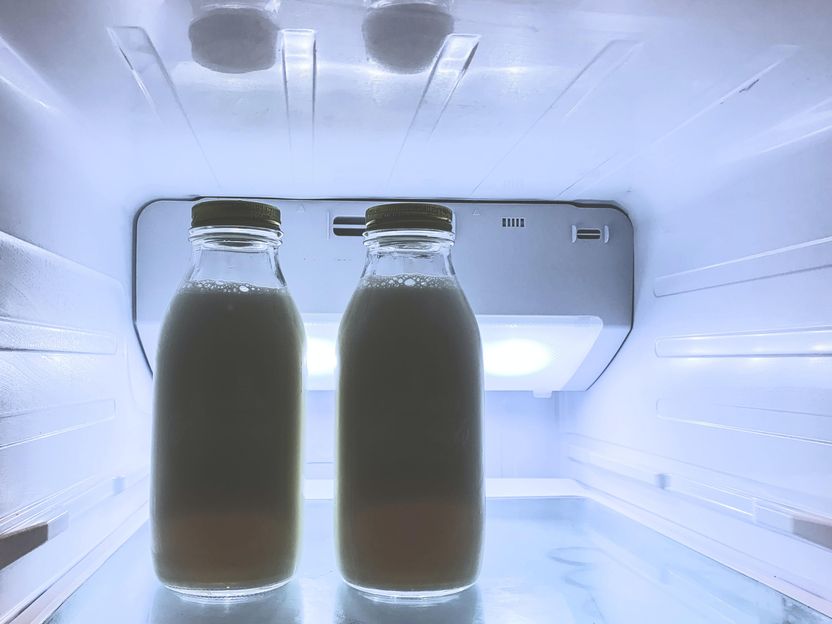UHT milk 2.0
Future UHT milk should have more taste & nutrients
Better energy balance, longer shelf life and better nutritional properties: Jury honours Elena Kohler's innovative concept for UHT milk production
Getting young people excited about the bioeconomy - this is the goal of the "Bioeconomy Award" of the University of Hohenheim in Stuttgart. This year, the award honours the concept of Master's student Elena Kohler who is working on combining the advantages of UHT and Fresh milk through a new production process. She will begin her master's thesis in the next few days. The jury praised the interdisciplinary approach, which shows how food technology can contribute to a sustainable bio-economy. The prize is worth 2,000 euros. It was donated by Honorary Senator Marion Johannsen in order to support students in their master's thesis. The prize will be awarded on 22 July 2020 at 15:00.
Germans love UHT milk: with a market share of over 70 percent, it is the leader in drinking milk. Its popularity is probably mainly due to its shelf life of several months at room temperature. To ensure this shelf life, existing microorganisms and enzymes must be killed or inactivated by briefly heating the milk to temperatures of 135 - 140° C.
But this ultra-high heating also has disadvantages. These include a certain cooking taste of the treated milk and a loss of nutrients such as vitamins.
"In addition, a great deal of energy is needed to reach the necessary temperatures. Most of it comes from fossil fuels such as oil and gas," explains prizewinner Elena Kohler.
Ecologically superior, full of taste and storable at room temperature
Kohler's vision is a new type of milk that combines the advantages of UHT and fresh milk: storable at room temperature, with a fresh taste and high nutrient content. The Master's student in "Food Science and Engineering" at the Department of "Dairy Science and Technology" of Prof. Dr. Jörg Hinrichs found the suitable environment for this.
And that's not all: "The desired product should not only be superior to conventional UHT milk in terms of taste and nutritional physiology. My goal is also a production process that is much more energy-efficient and therefore also ecologically superior to the conventional process," she summarises her approach.
Clever trick preserves nutrients - and still kills microorganisms
For this purpose, the milk is divided into two fractions in a novel process: A casein phase, which contains heat-stable milk protein in addition to the undesirable microorganisms, and a whey protein phase, which also contains the heat-sensitive vitamins.
This allows both phases to be heated separately and adapted to the ingredients: substances that reduce quality, such as microorganisms and enzymes, are rendered harmless in the casein phase by high temperatures. The whey protein phase, on the other hand, is only heated for a short time at lower temperatures, so that its valuable nutrients and proteins are preserved.
After treatment, both fractions are reunited.
Less energy consumption, less cleaning chemicals and less water consumption
For heating the predominant whey protein phase, the high-energy process of conventional UHT milk is also replaced by energy-efficient microwave technology. A technology whose power requirement can be covered 100 percent by renewable energies.
Homogeneous heating prevents the scorching of whey proteins on contact heating surfaces and also reduces the formation of residues in the apparatus, thus reducing the consumption of cleaning chemicals and the volume of wastewater.
Optimum temperature still to be determined
In her master's thesis, she wants to determine the optimal temperature for microwave heating of the whey protein phase, which is necessary on the one hand to make the milk durable and storable and on the other hand to keep the product changes caused by heat as low as possible.
For quality control purposes, samples of the newly produced milk are stored at room temperature and at 30 °C and are analysed and compared at regular intervals over three months with regard to their germ content, various quality characteristics and taste.
New product could reorganise the milk market
So far, there are 2 milk variants in addition to UHT milk: pasteurised fresh milk and so-called ESL milk ("extended shelf-life" milk). Kohlers new milk variant could snatch further market shares from both variants.
Pasteurisation of fresh milk is a very gentle heating process that reliably kills pathogenic microorganisms and causes only minor changes. Pasteurised milk therefore stands out for its fresh taste and high nutrient content.

Photo by Debby Hudson on Unsplash
Note: This article has been translated using a computer system without human intervention. LUMITOS offers these automatic translations to present a wider range of current news. Since this article has been translated with automatic translation, it is possible that it contains errors in vocabulary, syntax or grammar. The original article in German.



























































